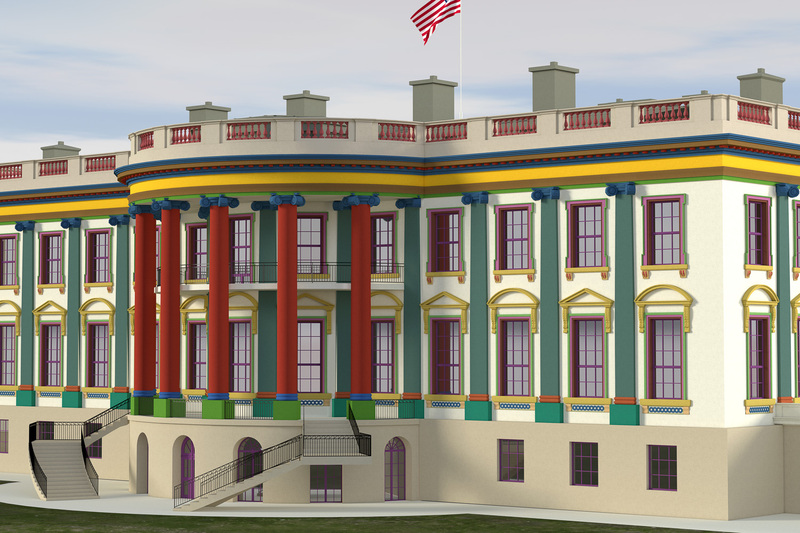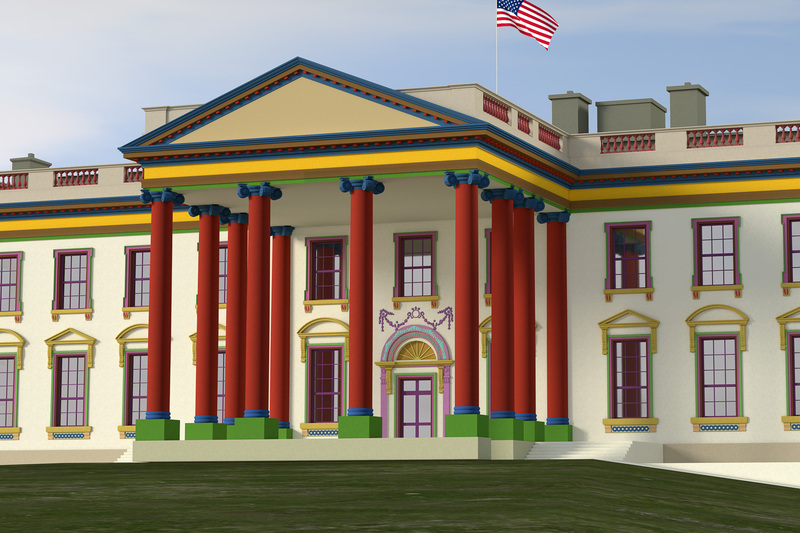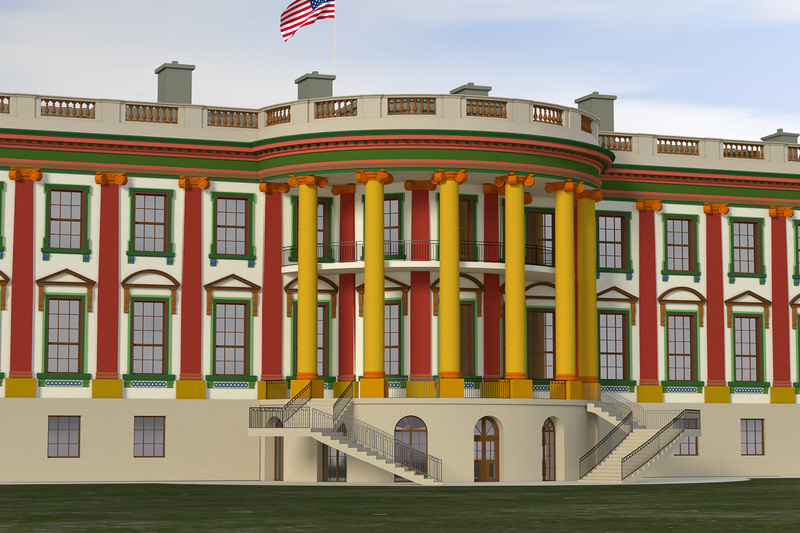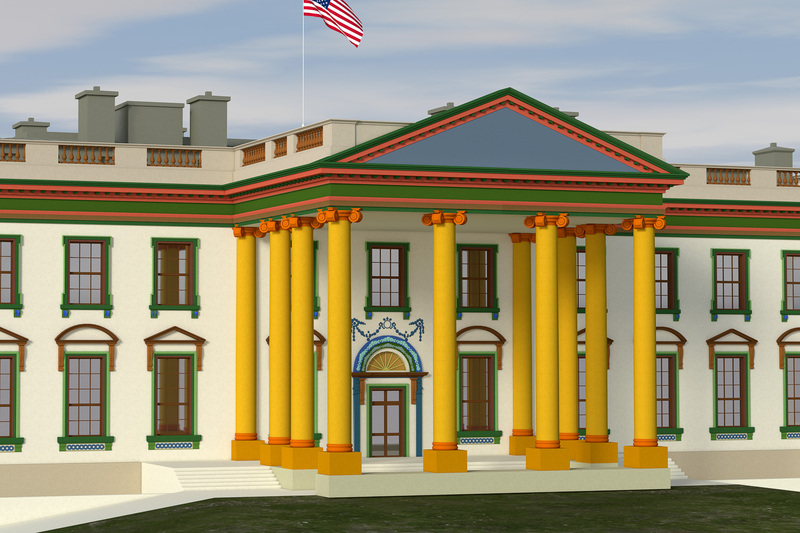Untitled (A Study in Polychromy for the White House) 1a
"A few years ago, while researching for a project at the Ryerson Library at the Art Institute of Chttp://13.58.135.34/admin/item/add#hicago, I happened across a 19th century portfolio by renowned architect Jacques Ignace Hittorff (1792-1867). Hittorff published detailed polychromy reconstructions of the ancient Greek temples of Selinunte in Sicily. Based on a trip he took to Sicily in the 1820s, where he collected bits and pieces of façade that contained paint that was more than 2,000 years old, Hittorff’s controversial reconstructions retrieved the colorful aesthetics and tastes of an ancient culture. With the current interest in polychromy and whiteness, it seemed timely to reapply the logic of polychromy in Greek architecture to Neoclassical or Classic Revival Style buildings in the US – buildings whose whiteness was fetishized based on an incomplete history of their origins. At the top of that list is of course the White House, which announces its whiteness both literally and symbolically.
Inspired by Hittorff's reconstruction, I began to speculate how polychromy schemes would fit the White House. How would the architectural elements of capitals and columns look in colors?
In the past twenty years the research on polychromy in architectural and art history has been taking a scientific turn. Historians and technicians apply advanced forensic analytic methods to conclude how things were “really” painted. But regardless of these efforts, while researchers know that buildings and sculptures were painted, they still do not know exactly how and in which exact colors. Additionally, research shows that color perception is dependent on cultural and environmental factors. Thus, there is a gap between the archeological artifacts, their contemporary perception, and the current knowledge we have of them. This irreducible gap opens a speculative or an imaginary space. And so we imagine how things might have been. This speculative power of the imagination has a potential not only to reflect on the past but also to imagine a future.
The ideas of the Enlightenment fueled the American Revolution and shaped the structure of it as a democratic republic. These ideas also equated whiteness with sovereign power. The facades of the White House were modeled after two other neo classical buildings: the Leinster House in Dublin (North façade) and Chateau de Rastignac near Bordeaux (South façade). Both buildings appearance is dominated by the brown and grey hues of their natural stone. However the White House denies the brownish materiality of its natural Aquia Creek sandstone and its façades are regularly painted in “Whisper White” exterior paint.The ideas of the Enlightenment also had a dialectical revolutionary aspect. Enlightenment challenged individuals not only to dare to think independently, but also to dare to imagine a different reality.
At first glance, proposing a polychromy scheme to the White House seems like an act of iconoclasm, as it involves a certain level of transgression. But this project in fact deals with the discrepancies between what we see and what we know. In other words, it is not about painting the White House, but about the question what could be imagined? It is about challenging aesthetic and cultural predispositions that are taken as evident truths. It is about the possibility to dare and think about a radically different reality."




